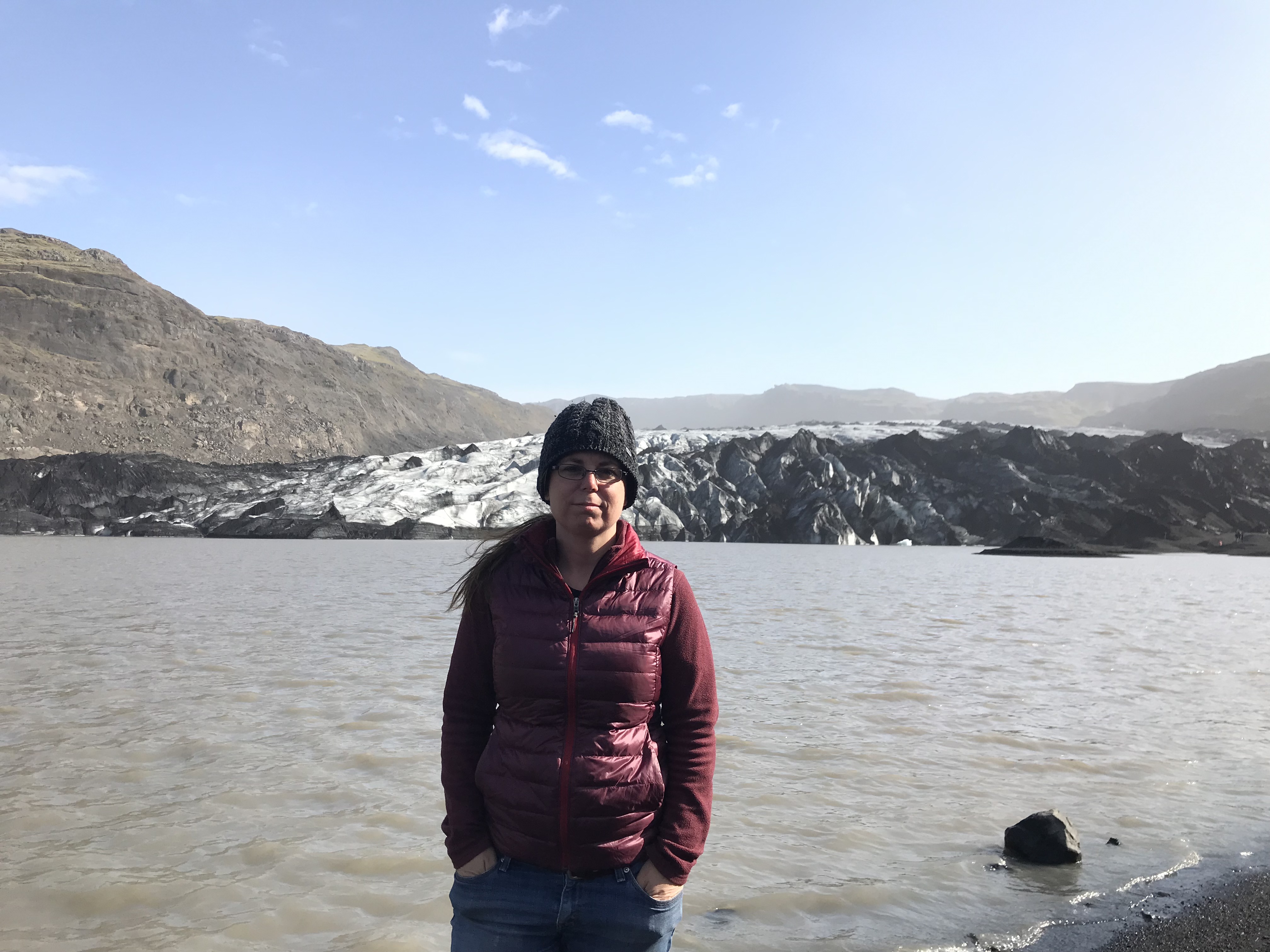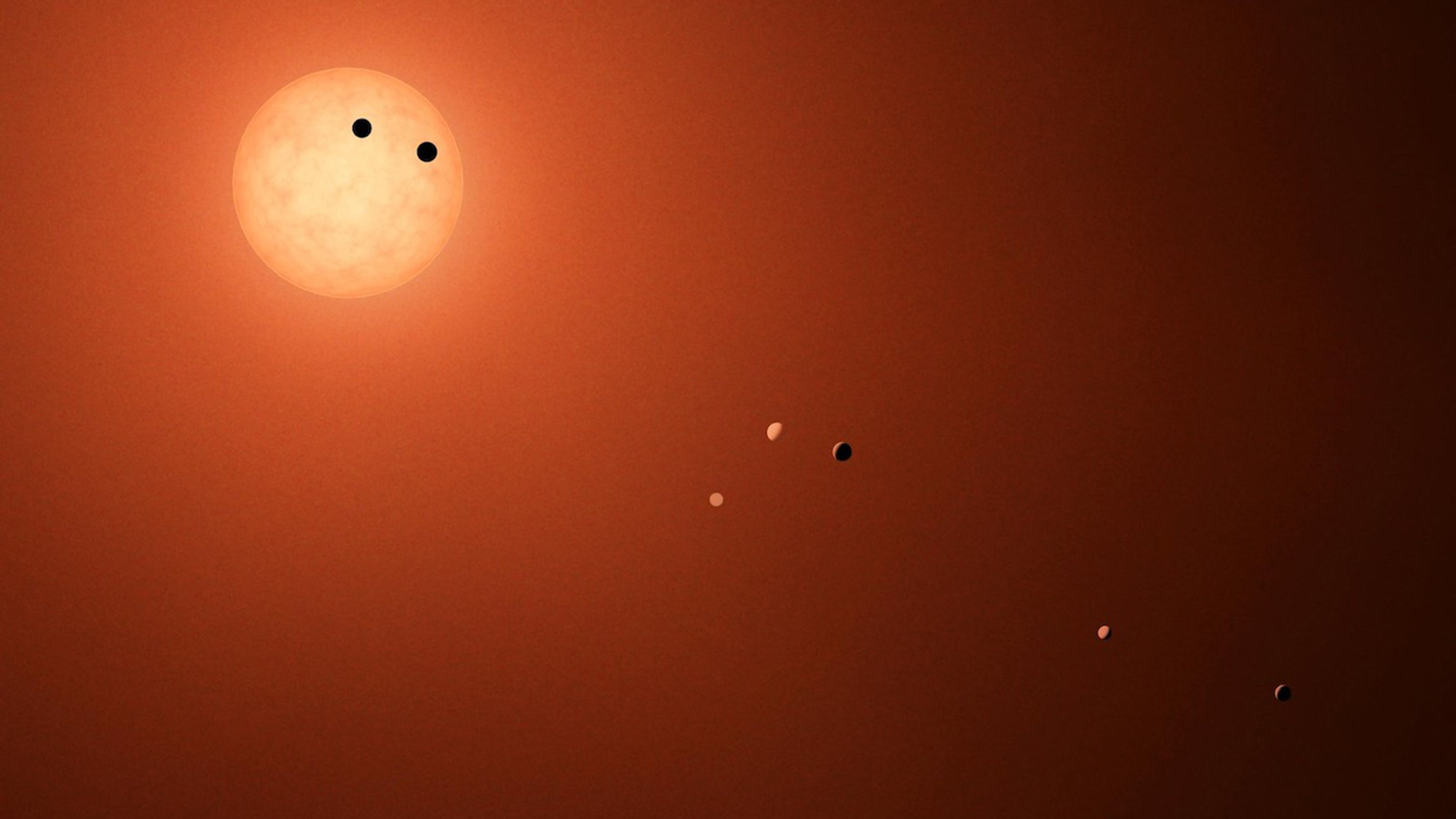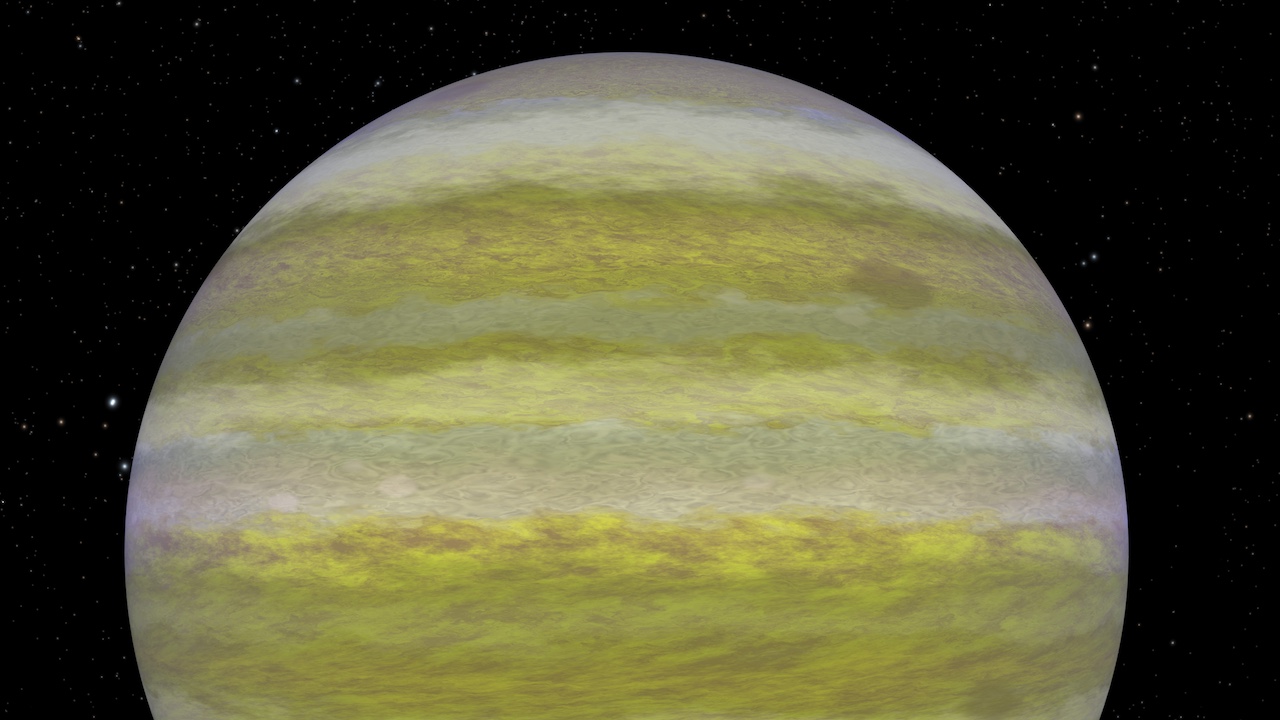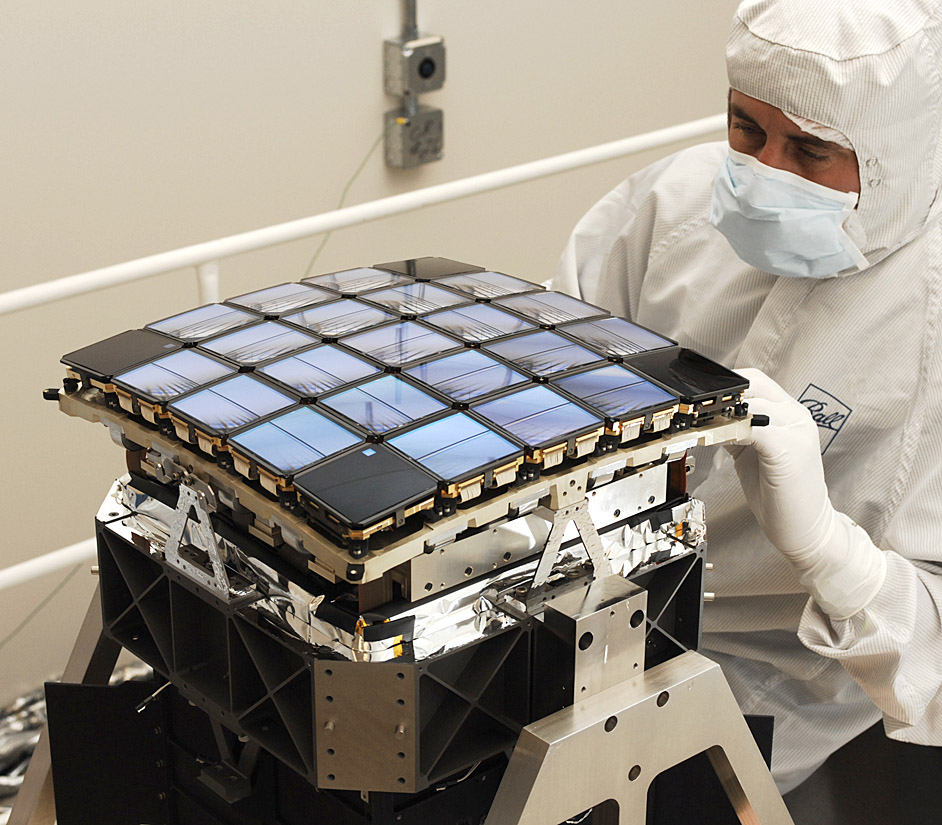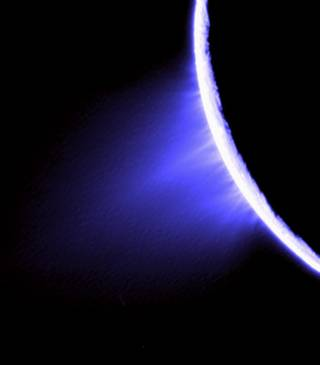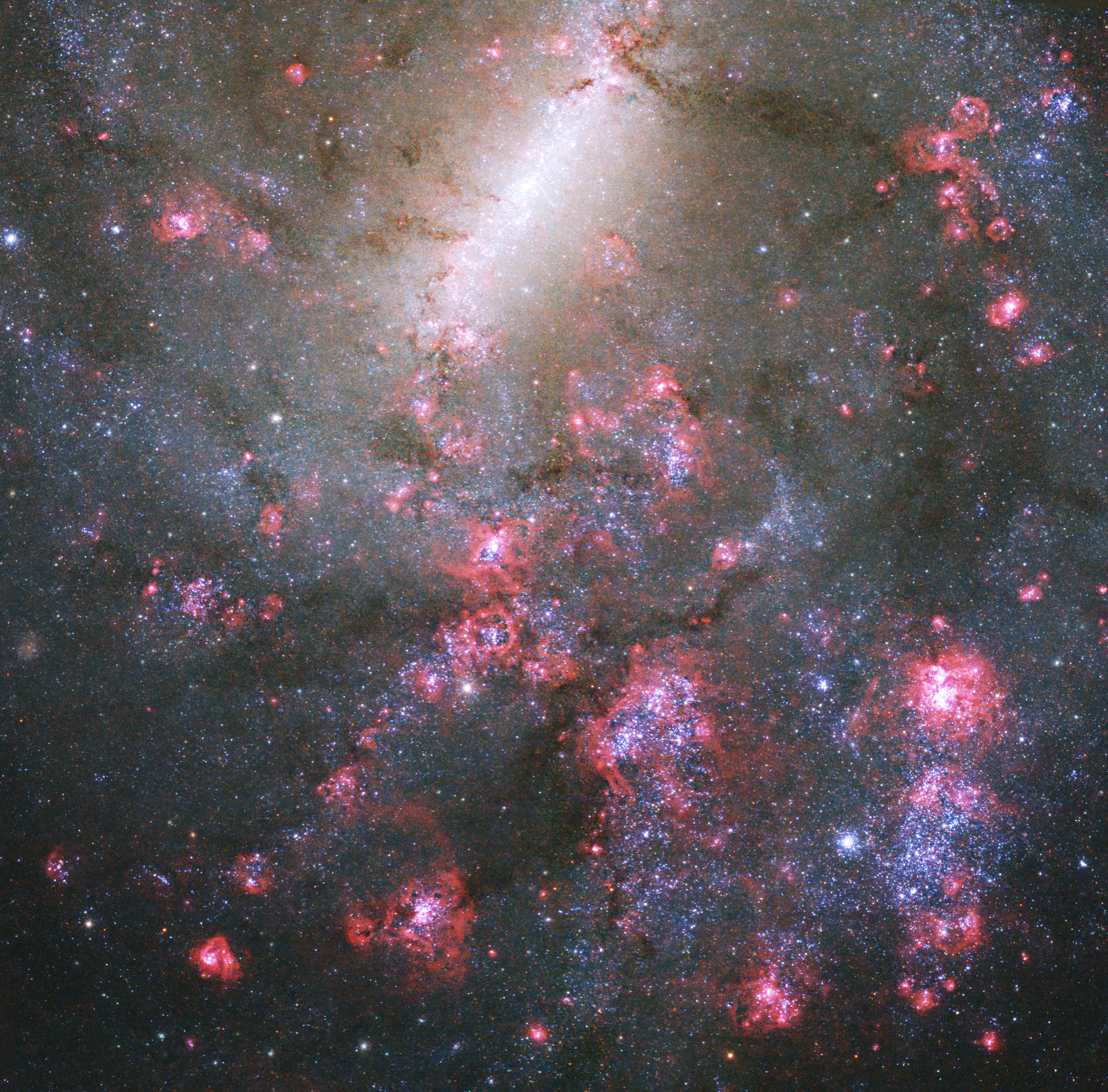34 min read
Student Intern

Hometown: Campina Grande, Brazil
"Back in Brazil, when I first heard about NASA’s Kepler Mission, the first thing that came into my mind was, ‘These people built and operate a space telescope with the goal to find Earth-like planets dozens or hundreds of light years away. They themselves are out of this world!’ Working for Kepler was an absolutely amazing experience. The mission and its quest for habitable worlds are so fascinating that every day at work felt like there was going to be a pink box of donuts waiting for you. And that was what actually happened. The feeling and privilege of being surrounded by the outstanding NASA teams of scientists, managers and engineers simply cannot be put into words. Go Kepler!”
Instrument Scientist
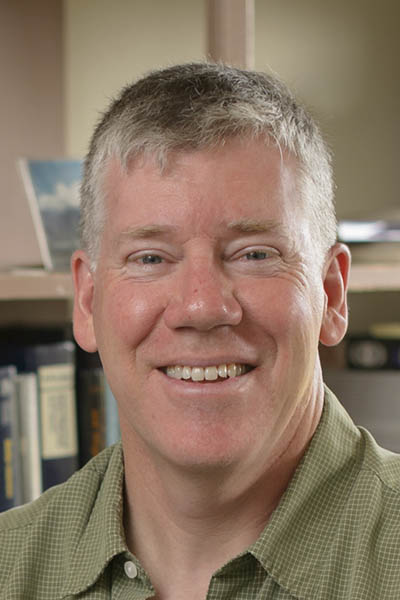
Hometown: Pittsburgh, Pennsylvania
I was in graduate school studying star formation in 1995 when 51 Pegasi b, the first exoplanet around a Sun-like star, was found. I remember being very skeptical of this Jupiter-size planet orbiting its star every four days. Little did I know then that I would spend much of my career studying exoplanets and helping the Kepler mission find even more bizarre and amazing planets. In 1998, I started working with Kepler’s principal investigator, Bill Borucki, on the Vulcan project. Vulcan was a small, 10 centimeter-diameter telescope designed to look for planets like 51 Peg b that happen to pass in front of – or transit— their star as seen from Earth. At the time this approach was not widely accepted in the astronomy community and Vulcan was a proof-of-concept for the much more ambitious Kepler mission. I was part of a small team (three of us!) working on incorporating our Vulcan experience into the design of Kepler’s data processing pipeline to help convince NASA that Kepler would work. After NASA agreed, our team grew significantly as we began the detailed work of designing and building a spacecraft and data analysis pipeline that could monitor over 100,000 stars searching for the tiny transit signals of Earth-size planets. My role shifted to uncovering the quirks of the instrument and understanding how they would affect our search for planets. As instrument scientist I helped oversee the testing and characterization of the photometer and helped develop the models and algorithms needed to calibrate Kepler’s science data and distinguish between transit signals from exoplanets and the often much larger artifacts from the instrument. While I enjoy burying my head in the minute details of the data, perhaps the most satisfying part of my time with Kepler is when I step back and see how Kepler’s results have fundamentally changed not just the field of astronomy, but humanity’s understanding of our place in the universe. We now know that there are not just a handful of oddball exoplanets out there, but that there are more planets than stars, including planetary systems with many that are potentially habitable. I am proud to be a part of the Kepler team.
Co-investigator for Data Analysis
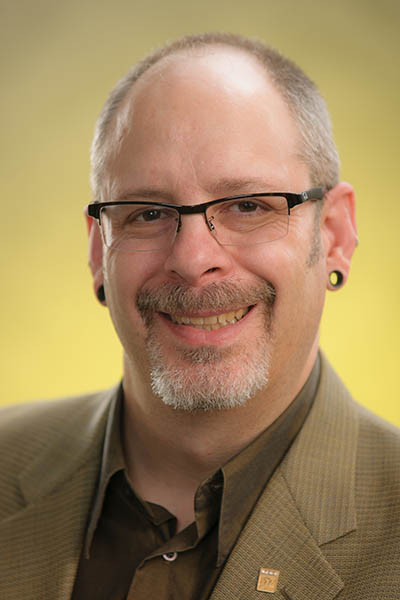
Hometown: Merritt Island, Florida
“Nothing compares to when you get the spacecraft up there and it opens its eyes and sees for the very first time. I was actually going to work (in May 2009), en route, when I got word the data was ready. I got to work at 6 a.m., ready to sit down with my coffee, looking at the data. I couldn’t quite bring myself to do it, I was so anxious. I actually washed the coffee pot – 12 people (in the office), but the coffee pot rarely got washed. I took an extra 10 minutes to calm my nerves, to give it an extra scrub. Then I started pulling data across, looking at light curves. The brightness variations of stars were phenomenal – everything we imagined they could be. It was very easy right off the bat to see eclipsing binaries, lots of variable stars and transiting exoplanets. A colleague turned to me. He had this encyclopedia of variable stars. He said, ‘Jon, I don’t see anything like that in the encyclopedia.’ That was what Kepler was like. It showed us stars in a whole new light, in ways we’d never seen or appreciated before. Right out of the box, we knew Kepler would be a success.”
Project Scientist
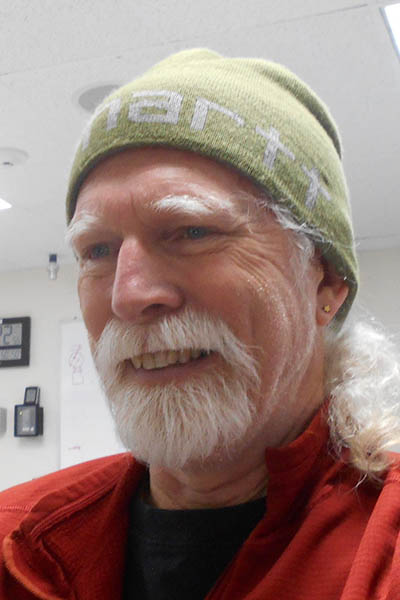
Home town: Oakdale, Pennsylvania
“Kepler and K2 have changed the course of human thought. They have provided an inflection point not only in science but also in the very nature of our existence. These missions have provided paradigm-changing results in stellar astrophysics, new views of cosmology, and their greatest finding, the discovery of a multitude of exoplanets including potentially habitable worlds scattered throughout the galaxy. Bringing together not just scientists but all people, these two missions, assembled here on planet Earth, give us pause to reflect upon ourselves and upon our existence in the Universe. As in the Copernican Revolution, when we learned we were no longer the center of the universe, we now know that we are unlikely to be alone, unlikely to be the only life-bearing rock orbiting the distant stars. Yet for now, Earth is our only home. All of us are important and all our lives are precious. Here there is no room for hate, fear, and bigotry. Perhaps now we can finally dispense with the futile and ignorant belief in war as a political tool and choose instead to go forward together and become emissaries to all life everywhere.”
Support Scientist
Home town: Newark, New Jersey
“One of my favorite memories of the Kepler mission was our trip to an asteroseismology conference in Aarhus, Denmark, in June 2010. We were excited to present and hear the first Kepler astrophysics results, and we spent a few days as a science team in Ebeltoft. Four of us – Mike Haas, Doug Caldwell, Steve Bryson, and myself – decided to go on a pilgrimage to Tycho’s observatory on the island of Hven in the North Sea, where much of the data analyzed by our namesake Kepler was generated. We got there 10 minutes before closing at 4 p.m. and were crestfallen. Then, Steve Bryson noticed that the young man running the museum was reading the CERN web page, and thought he might be interested in astrophysics as well. He was very excited that we were from the NASA Kepler program. He gave us the keys to the underground observatory and said, ‘Just drop the keys off on your way out.’ So the four of us went over to the observatory and looked with reverence at Tycho’s equipment, things that looked like giant protractors and sextants kept underground for the stability of the measurements – just like the Kepler spacecraft, for which thermal control of the instrument is a key part of doing the precise measurements of the shadows of planets around other stars. I felt great admiration for the people who had come before us in astronomy who did their work without computers or telescopes, but with a great passion for revealing the past and foretelling the future, and felt great gratitude to the taxpayers of the U.S. and our European friends who support our participation in this great adventure.

Data Processing Lead

Hometown: Sonoma, California
“I started in 2007 as a student worker for Dr. Natalie Batalha, while working on my (master’s degree) in physics at (San Jose State University), doing light-curve modeling of eclipsing binary stars on Vulcan (photometer) data. In 2009, I was hired on full-time in the Science Operations Center (SOC) as an operations engineer. Work as an operations engineer consists of processing the science data through its lifecycle. The process began with running pipelines to help the science office choose which stars to observe during a (data collection period). Then we'd export those tables and send them off to be uplinked to the spacecraft for science observations. After three months of collecting science data on the spacecraft, that data set would be delivered to the SOC for data accounting, (importing the data) into the computing cluster, processing, and export. The processing and export results get pushed to the science team, and then delivered to the MAST (Mikulski Archive for Space Telescopes) and the NExScI (NASA Exoplanet Science Institute) Exoplanet Archive for the science community. Getting to use the NAS supercomputer to process the big multi-quarter data sets was pretty exciting! It was always fun to go to team meetings to hear the science results before everybody else: when we found the planet going around two stars, or finding the heartbeat stars (binary stars that seem to pulse more strongly as they approach each other). It is hard to choose a favorite science discovery, but I would say that Kepler 186f had a big impact on the team. Looking back, I think this has been a challenging job, but sometimes there would be fun times – like back earlier on, we used to go gather back in a conference room to watch episodes of original Star Trek. I remember watching ‘The Trouble with Tribbles’ and eating snacks and thinking this was an awesome place to work.”
Support Scientist
Hometown: San Rafael, California
“The project evolved over time. We started out (with) a huge software pipeline that we used to analyze data. I was taking responsibility for converting pixel data into light curves. It’s mostly about knowing which pixels you want (and) exactly how light is spread out by the system. We needed to test data before we flew. We made simulations of everything from how pixel values appeared to the spacecraft through communications coding, (to the) ground and all the organizations it would flow through. It was absolutely critical; we revealed all kinds of problems doing that. Once (Kepler) launched, I was commissioned with the responsibility of actually measuring how light spread out. It was exciting because it was very high pressure. It fed directly into what we got from the spacecraft. We couldn’t do all the pixels; if I selected the wrong pixels, that’s it. I got very involved in validations of discoveries. My specialty was making sure they weren’t polluted by background objects, by analysis of pixels. One thing I can brag about is being second author on two papers that validated discoveries: first 800, then 1,400 planets, all in one shot. Both of them hold the record. No other single paper validated that many planets at once. One day I came home and my wife, Hanna, asked how work was. I said, ‘Fine, we found about four more planets today.’ Like that was normal. Then I paused, and realized what I just said. Wow, it’s amazing what you get used to. What Kepler was doing: Is this rare or normal? The answer we came up with was, wow, this is really normal. That’s what makes it history.”

Support Scientist
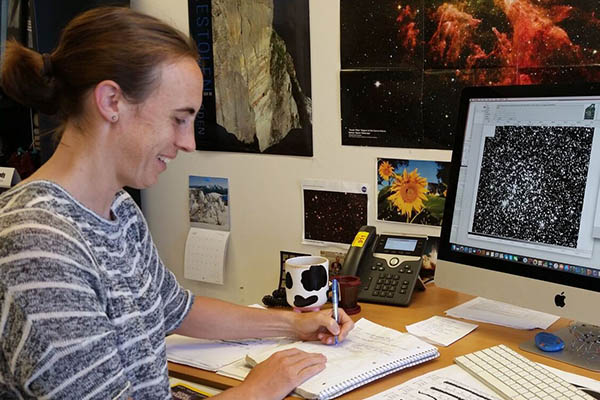
Hometown: Sunnyvale, California
“Back in 2009 I was in graduate school getting ready to write my thesis. I was working on some photometry projects, monitoring the whims and outbursts of young stars (where ‘young’ in astronomy means a few million years old). I had used the Canadian space telescope MOST and was soon to use the French space telescope CoRoT. But what was this Kepler telescope that had just launched? Could I use it to observe young stars? It turned out that the answer, at least initially, was no. Kepler was dedicated to a particular patch of sky, and there were no young stars there. I instead became heavily involved with the analysis of young star data from CoRoT. But in late 2012, a computer failure brought the telescope to its knees. Some nine months later, a major problem (loss of a reaction wheel) would strike Kepler too. But there was a ray of hope: unlike the CoRoT mission, which was unsalvageable, Kepler was still able to carry out science. The telescope had simply lost its ability to point stably. Kepler’s engineering teams came up with a radical idea: re-orient the spacecraft such (that) it was in rough equilibrium thanks to the Sun’s light impinging on its solar panels. Kepler would no longer be able to stare at the same patch of space that it had spent four years on, but it could look to entirely new areas. And in those new areas...were young stars! In early 2014, Kepler was reborn as the K2 Mission. I applied for a postdoctoral fellowship position at the NASA Ames Research Center headquarters to Kepler. Some months later I moved to the Bay Area of California to work with this fabled telescope. It’s now been nearly four years, and it’s one of the best moves I ever made. I’ve had the privilege to get the first look at incredibly high quality and intriguing data on young stars, and with that data we’ve made numerous new discoveries. We have found orbiting blobs of dust around them -- potentially related to the initial seeds of exoplanets. We’ve observed gas funneling onto the young stars in huge bursts. And we’ve identified the youngest known planets orbiting these objects.”
Support Scientist

Hometown: Cambridge, United Kingdom
“Kepler has been such a paradigm shift for people like me. I remember using it for my pre-master’s project. It’s such a constant, such an assumed thing. I’m in a really privileged position to be in the first generation of astronomers able to use it as readily – from the beginning of my career it’s been available. I’m incredibly grateful for it. We use it so much every day; so much relies on it. It’s seamlessly part of the astronomical landscape. I cannot imagine what astronomy was like 20 years ago without Kepler.”
Lead Scientific Programmer
Home town: San Mateo, California
“I joined the Kepler team 1.5 years before the (2009) launch as a senior scientific programmer in the Kepler Science Operations Center (SOC). The SOC was responsible for developing, testing, validating, operating and maintaining the Kepler Science processing pipeline. The pipeline consists of a set of software modules; when run in sequence the modules produced photometric light curves for roughly 160,000 target stars in each observing quarter, searched the light curves for signatures of transiting planets, and generated planet models and vetting diagnostics to help distinguish between legitimate planet candidates and false positive detections. I have a Ph.D. in electrical engineering in the area of signal processing, and had already been involved with NASA programs and planetary missions for over 20 years when I joined the Kepler team. Working in the SOC was a fabulous professional opportunity. Detecting the signatures of transiting planets, in particular small planets orbiting in the habitable zone of their host stars, seemed like the ultimate signal processing problem to me. And so it was!!! The Kepler mission received a great deal of visibility, and the results revolutionized the exoplanet field. Significant contributions were also made in astrophysics and asteroseismology. After a few years in the SOC, I became the lead scientific programmer and assumed a greater responsibility for the work of the group. My workmates were experienced, bright and highly skilled; they were also great fun to work with. I made friendships in the SOC that will last a lifetime. Developing the Kepler pipeline, and identifying the signatures of thousands of potential exoplanets, was greatly challenging and highly rewarding. I am thankful that I had the opportunity to become involved with the Kepler mission, and I am proud of my contributions to Kepler science.”

Safety and Mission Assurance
Home town: Sunnyvale, California
Kepler provided an opportunity to hear about planet observations first. I found it very exciting over the years seeing the photometer get designed, manufactured, assembled, tested, launched, and witness first light as the cover was released that began science data collection. This experience was very cool. The team had moved into mission operations with a new excitement of finding plants. It was incredible to sit in the team meeting and to hear the data has identified planets. It was a privileged to hear about the exciting new discovery before the public as a team member. I am proud to have been able to be part of the team knowing all that Kepler had contributed to science.

Support Scientist
Home town: Dublin, Ireland
From 2010- 2016, I worked on Kepler in the science office. I had a bunch of jobs, from helping to monitor spacecraft health, assessing the quality of the data analysis, to making catalogs of planets. My most important job was to find "not-planets." In other words, there were a bunch of signals in the data that looked like planets, but were actually due to other things, like eclipsing binaries, variable stars, and even high energy particles flying through space and hitting the detector (this happened way more often than you would expect). We had to figure out which signals were planets and which were other stuff.
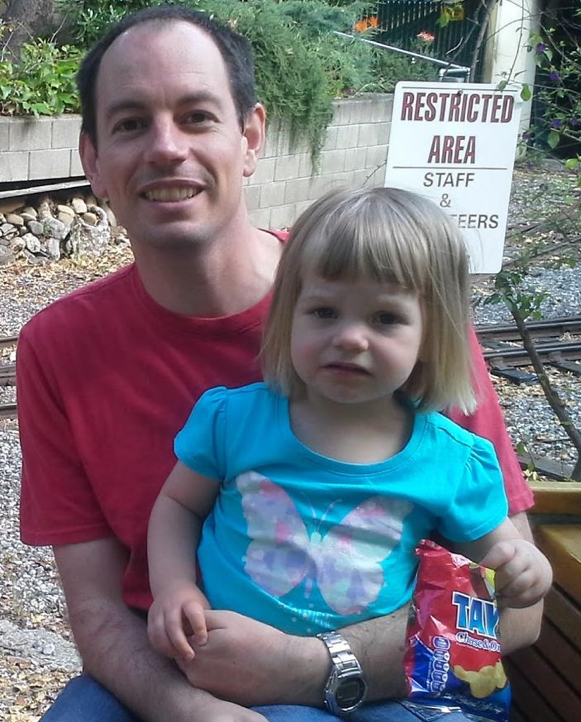
When K2 was getting started, I had to figure out where to point the spacecraft for the first campaign. I had a lot of fun working with spacecraft orbits and attitudes with loads of vectors and cross products. As Bart Simpson would say, "I'd finally found a practical use for geometry!" To help me figure out all the orientations I made a little Lego model of the spacecraft -- I still have it on my desk -- and I'd spend half an hour lining it up just right on my desk, with coffee cups strategically placed around the office to represent the Sun, the Earth, and any other solar system planets I had to worry about. Once I had the Lego lined up so all the vectors were pointing in the right place I’d go check that my code was giving me the right answers.
Of course, everytime I did this someone would walk into the office, pick up the Lego, turn it around in their hands a few times and ask: "What are you doing with this?" At the end of it all, me and my little Lego model got to point a space telescope millions of light years away in space.
My 6-year-old self would have been seriously impressed.
Support Scientist
Home town: Waukesha, Wisconsin
I was in the Kepler Science Office for seven years. I created exoplanet catalogs and made all the data and planet catalogs accessible (and understandable) to the larger astronomical community.
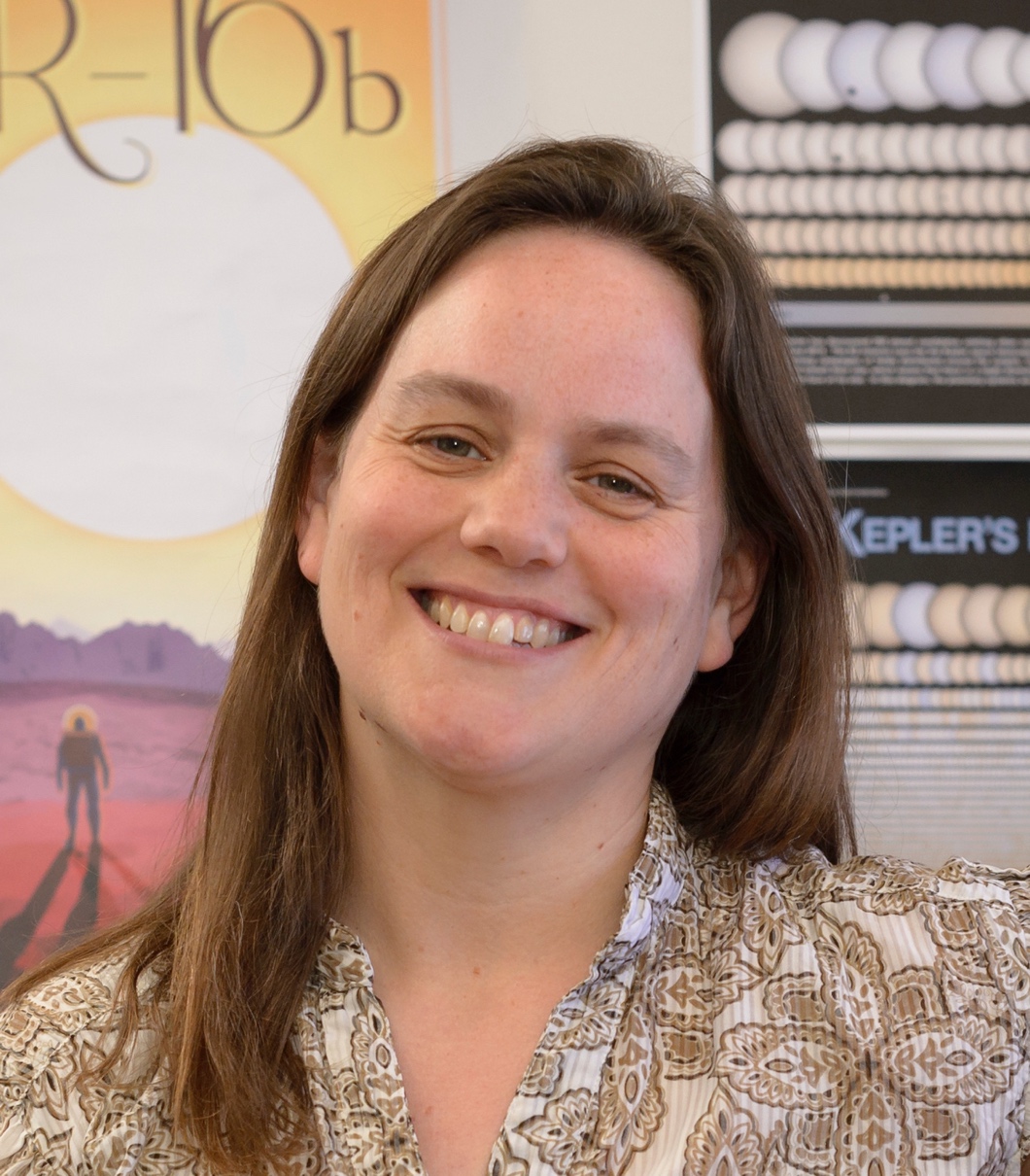
Kepler will always be the backdrop against the memories I have of starting my family. While I worked on the Kepler team to figure out what the data meant, I was also figuring out how to be a wife and mother. My husband and I both started at Kepler the summer after we got married. My son was born the following year. I gave a presentation on heartbeat stars at the Kepler science conference two weeks later, proudly showing a picture of the newest member of the Kepler team. At the Christmas party, the manager of the Kepler science office, who adores babies, carried my newborn baby boy around in one hand and a plate of food in the other. My daughter arrived right after we lost the second reaction wheel and Kepler became K2. I came back from maternity leave and was suddenly working on a new mission. As my kids grew, they loved visiting my work. They would run through the hallways, draw on the white boards, and come home with mission stickers co-workers found in their offices.
The great thing about Kepler is that it is the first time we were able to look at stars for such a long time at such high precision. As a result, we had a few puzzles to figure out in the data, signals we had never seen before. The one I remember were these periodic events that not only decreased in flux (a drop in starlight) like a transit, but then immediately got brighter. Some looked a bit like the signal you get from an echocardiogram, so they got the nickname “heartbeat” stars. After a lot of long hours of reading papers on related topics, I found a theoretical paper from 20 years earlier that predicted these exact brightness variations from two stars tugging on each other as they danced around each other in an eccentric orbit. Times like these when you go from bewilderment to understanding is the reason you go into astronomy. It was a lot of fun finding these unusual systems in the Kepler data that were believed to be possible, but were difficult to find.
Lead Operations Engineer
Home town: Seattle, Washington
My journey with the stars began when I was a child. In 1986, my family drove out to find a patch of dark sky one evening to catch a glimpse of Halley’s Comet. I remember several dozen people out there, with their faces turned up to the sky to witness the event. This comet brought people from many cultures together, to talk and listen to one another, and watch the sky for the wonderful sight.
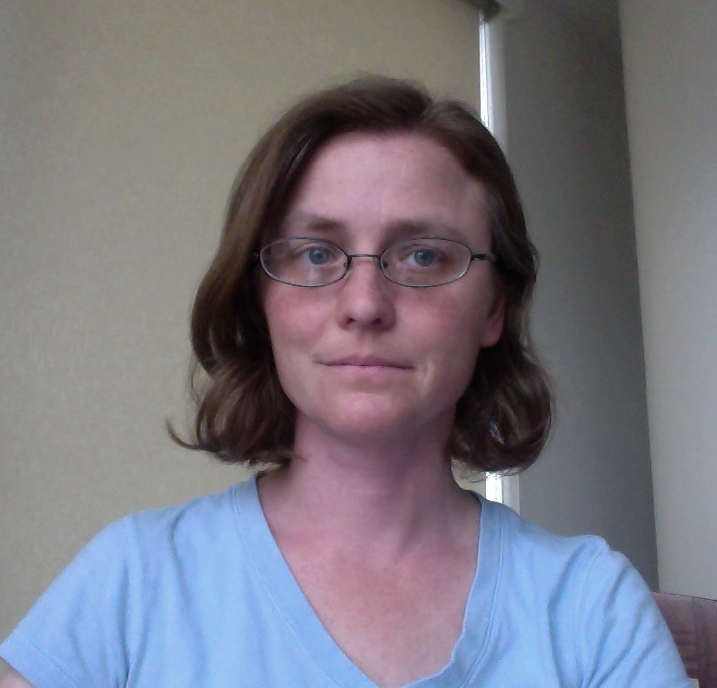
My journey with Kepler started when I was a master’s student in the physics department at San Jose State University. I was taking astrophysics from Dr. Natalie Batalha, who was a co-investigator on Kepler at that time. I started as an intern under Dr. Batalha, studying the Kepler Input Catalog (KIC) to assess the accuracy of the stellar properties: mass and radii. One day in late 2008, Dr. Batalha came into my cubicle and said the Science Operations Center (SOC) needed a test engineer to work on release testing. She had already told them that I would be a great addition to the team and I soon joined the SOC in their preparations to release the pipeline software before launch. After a short stint writing up release test procedures, I jumped into SOC operations, becoming lead operator as the team grew. Working in Kepler SOC operations was a good balance of both excitement and tedium. I worked closely with the SOC pipeline developers to coordinate releases and data re-processing efforts, as well as work with the developer who would fix our latest bug. Even though Kepler was looking at the same patch of sky, near Cygnus, every monthly or quarterly data set had the potential to be just different enough to find a corner case in the code. I also enjoyed working with the Kepler Science Office and getting to know various personalities in each group. Working on the Kepler Mission was an adventure in both science and society.
Like Halley’s Comet, Kepler also brought together people from all walks of life, to talk together and wonder about the sky and about our place in the universe. The Kepler mission gathered an amazing group of engineers, developers, scientists, and professionals to work on the mission. The staff on Kepler were (and are) dedicated and enthusiastic about the mission -- about finding the first Earth-like planet in the habitable zone around a Sun-like star. They were (and are!) excited about the science, the software, the challenges, and the wonder that the stars bring down to our Earth.
Kepler brought together children and adults to talk about the stars, planets, and what makes life possible.
Scientific Programmer
Home town: San Ramon, California
When I joined the Kepler Science Operations Center (SOC) in June 2004, it was a small team - Jon Jenkins and Doug Caldwell from SETI Institute, and a few software engineers from Orbital Sciences. The SOC team was temporarily located on the second floor, while the permanent location on the top floor of the building – our "penthouse" - was undergoing major renovations. The team was working diligently and preparing for the Preliminary Design Review. My very first task was to help perform Monte Carlo simulations to estimate the number of false alarms due to eclipsing binaries for three possible positions of the center of the field of view (FOV) of Kepler. Little did I know that it was just the beginning of a learning experience that was to last until 2010. My job was to protype, verify, and validate pipeline signal processing algorithms, document algorithms in design notes, and write software detailed design documents as the SOC team prepared for the Critical Design Review in 2006. After that review, the team grew quite rapidly and it was a joy to work with such a talented and dedicated team of scientific programmers and software engineers. I was in Cape Canaveral with my family to witness the launch of Kepler on March 7, 2009, along with the entire SOC team. It was an exciting time being part of the Kepler commissioning team, waiting for the science data download, and processing the Kepler attitude correction within four hours.
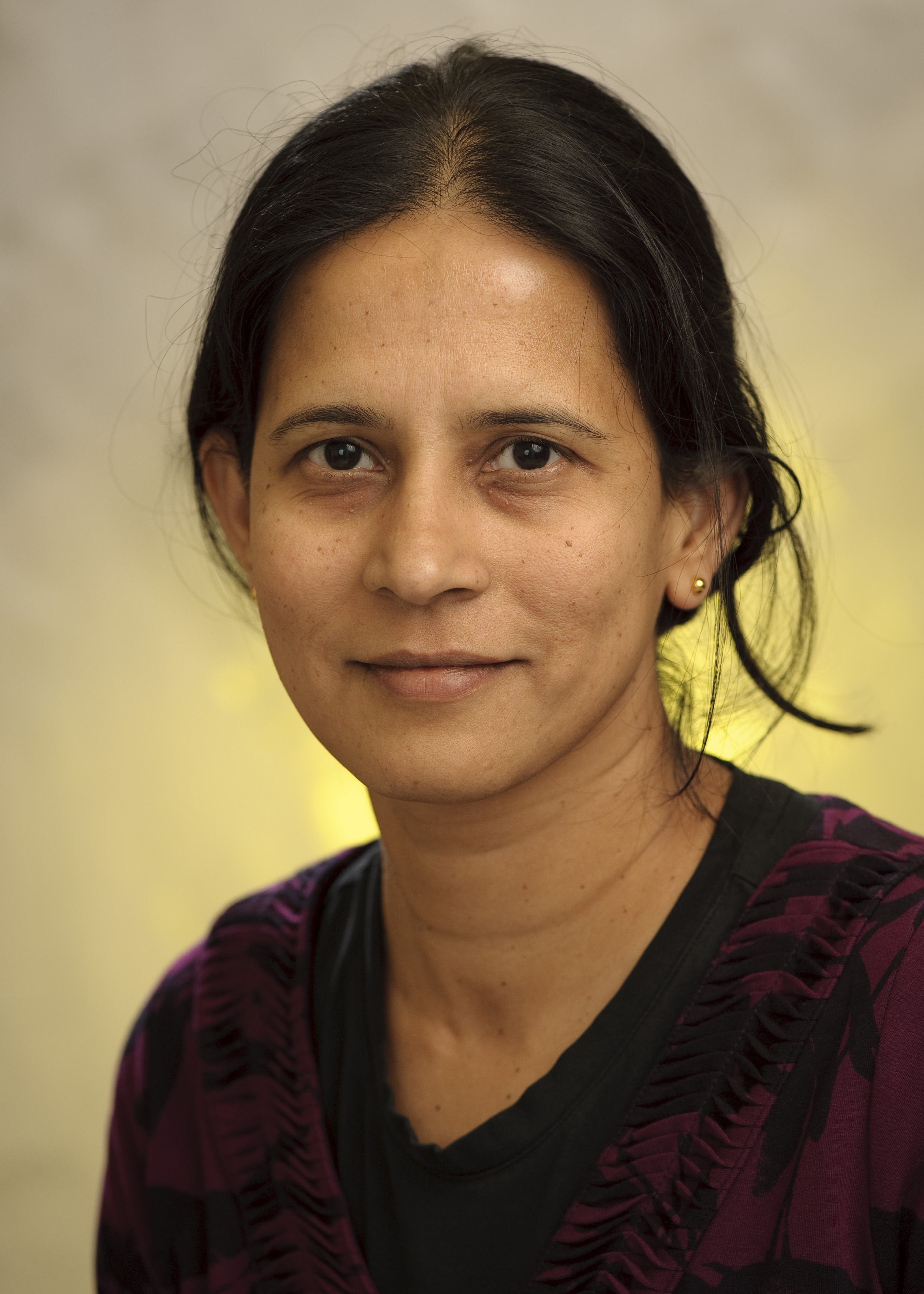
Participating Scientist
Home town: Vienna, Austria
I joined the Kepler science office in 2011, initially as a NASA postdoctoral program fellow and later as a participating scientist. The majority of my work focused on understanding the properties of stars Kepler observed. Since the transit method only measures properties of planets relative to stars, this information is in many cases critical to accurately measure the sizes of planets Kepler detected. I was responsible for generating the Kepler Stellar Properties Catalog, and later also generated the Ecliptic Planet Input Catalog (EPIC) which served as the basis for selecting targets for the K2 mission.
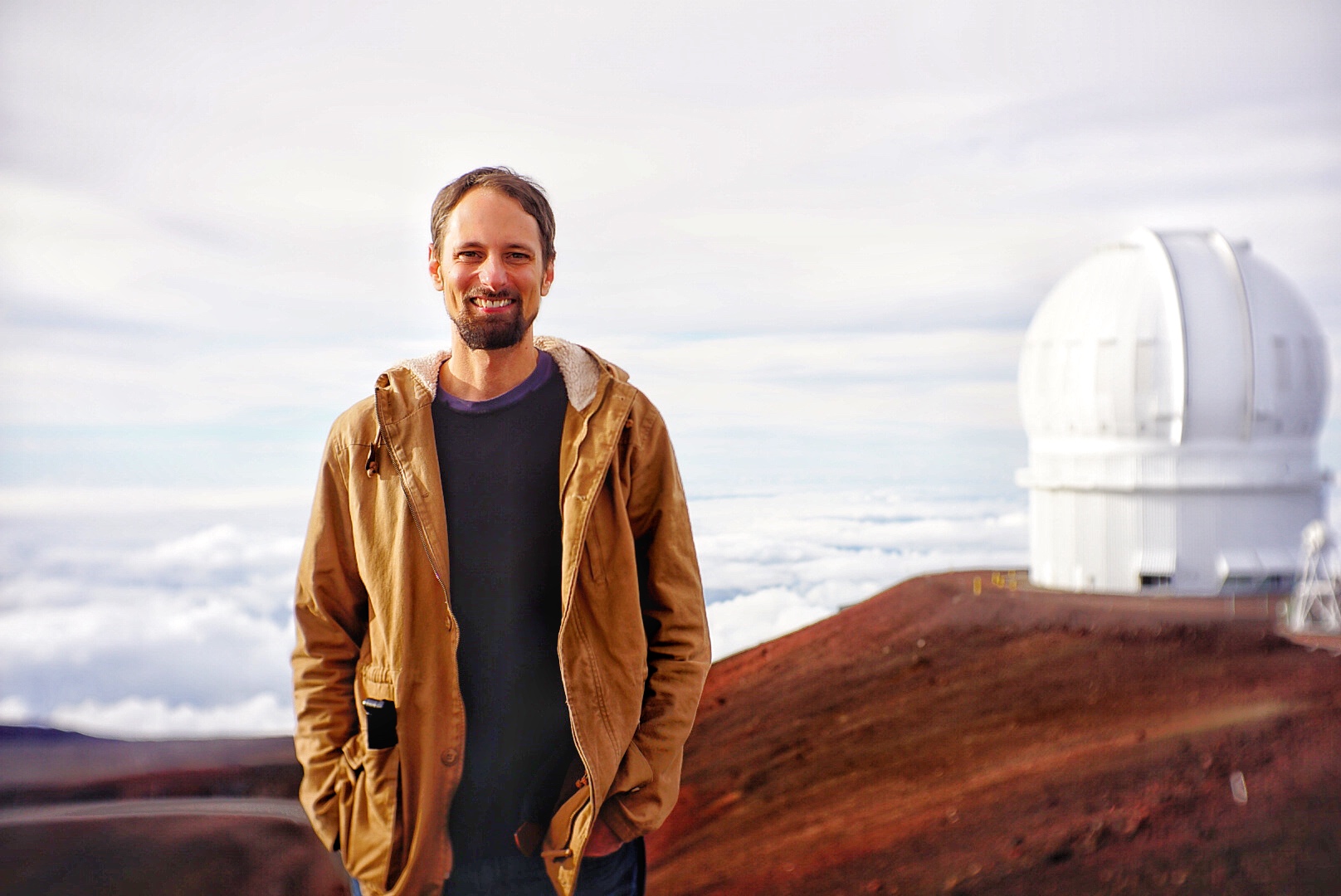
My main research interest with Kepler data is asteroseismology, the study of oscillations, or vibrations, in stars. Similar to how musical instruments vibrate in different tones due to changes in size and composition, sound waves in stars can be used to understand their fundamental properties and interiors. Kepler data revolutionized the field of asteroseismology (arguably on a similar or even larger scale than exoplanets!), and allowed us to peer deeper into the interior of stars than ever before. Particularly exciting studies were those in which we were able to detect stellar oscillations and transiting planets for the same star, which allowed us to characterize both the star and planets using only Kepler data.
My most vivid memories working with the Kepler team were moments of discovery. I still remember the day when Tom Barclay came running down the hallway after spotting the transits of Kepler-186f (the first confirmed Earth-sized planet in the habitable zone of a star), or when Chris Burke came knocking on my door after discovering Kepler-444 (a system of 5 planets smaller than Earth, that asteroseismology revealed to be almost as old as our universe). Advancing our knowledge of our place in the universe in moments like these are the reason why many of us pursue astronomy as a career, and Kepler has allowed so many in the astronomy community to be part of incredibly exciting discoveries that felt like we are contributing a small part to making history.
Software Engineer
Home town: Mukilteo, Washington
I've spent most of my career working at the interface between brilliant scientists and software engineering. It was a great honor to work on the Kepler mission. I helped work on the spacecraft pointing logic, creating tools to help scientists make fast analyses of data, and overall database design. The Kepler team was a great group of talented and enthusiastic software engineers and scientific computing specialists. I'll always remember seeing the spacecraft's rocket launch, the first data from the instruments, and the steady stream of planetary discoveries.

Archive Scientist
Home town: Feeding Hills, Massachusetts
I decided to become an astronomer in junior high school when two important moments aligned at just the right age: the original Star Wars trilogy was re-released in theatres, and the first exoplanet around a Sun-like star was discovered. Both of these events happened in the mid- and late-1990s, when I was in junior and senior high school. I got completely lost within the realm of alien exoplanetology, first in the science-fiction creations and later when astronomers actually discovered more exoplanets. I wanted to know: What were their surfaces like? Were there ice worlds, or desert worlds? Water worlds?
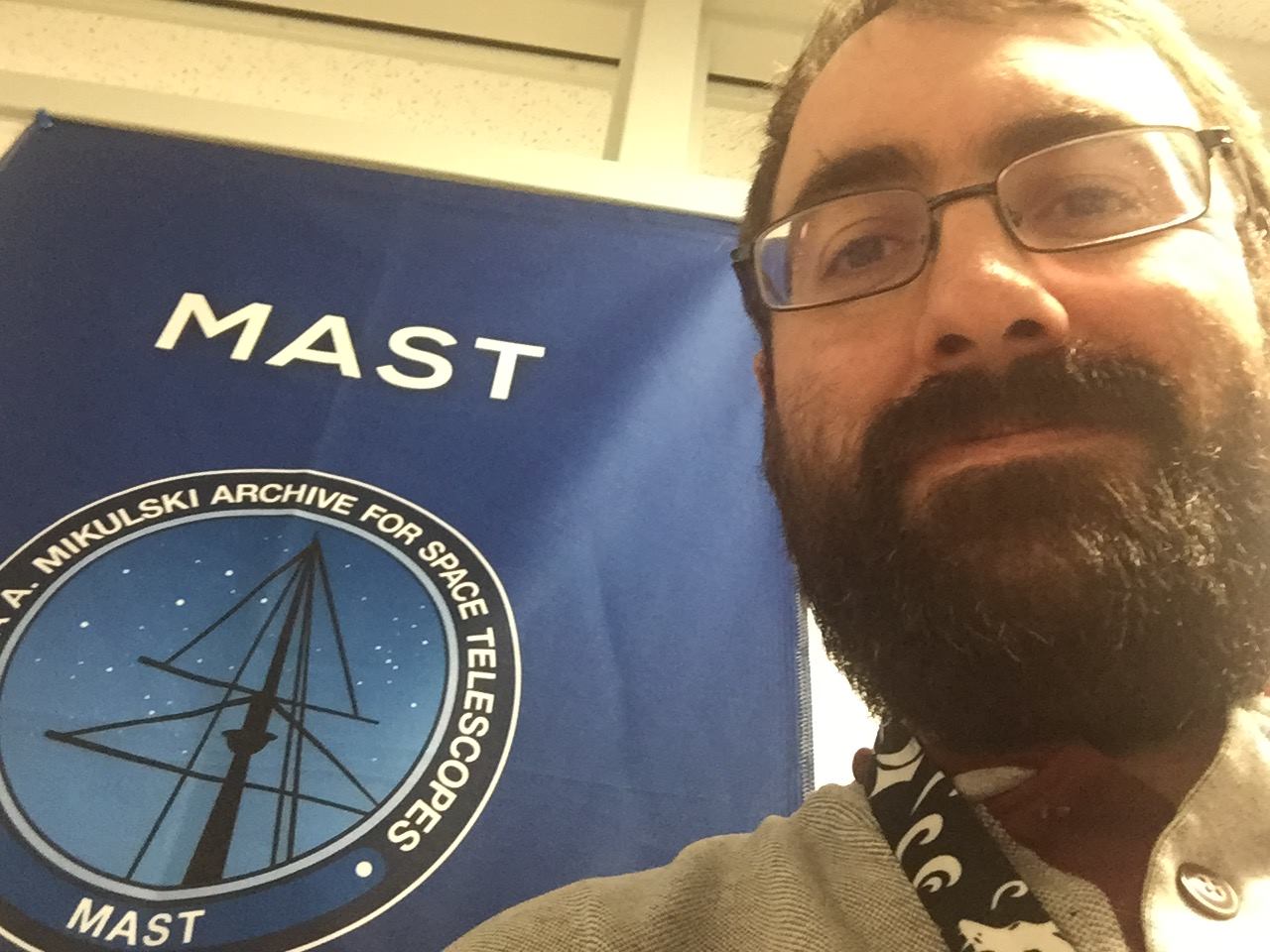
Since then, Kepler has discovered thousands of exoplanet candidates. One of my favorite memories was the announcement of Kepler-16b: the first "Tatooine" world found in real life. It was the perfect synergy of science fiction and science fact. Here was a binary star system that had an extrasolar planet orbiting around both stars, not unlike the planet Luke grew up on in the movies! Not only did it show that planets can indeed form around circumbinary disks and survive, but it perfectly aligned with my favorite sci-fi franchise.
After obtaining my Ph.D. in astronomy, I now have the privilege of working at the Mikulski Archive for Space Telescopes (MAST) in Baltimore. We are the final resting
place for all the phenomenal data collected by Kepler and K2. My job entails making sure these data products are discoverable and available to the worldwide astronomical community for decades to come. In addition to my own research using Kepler and K2 data, I enjoy seeing what the rest of the community is able to do with the data products, even after the mission has formally ended. I know that I have a small, indirect role in every discovery made as one of the stewards of Kepler and K2 data products.
Co-investigator, Education and Public Outreach (EPO)
Home town: Berkeley, California
When David Koch, Kepler deputy principal investigator, invited Edna DeVore (SETI Institute) and I to help prepare the Education and Public Outreach (EPO) element for the second to last proposal in 1998, we had no clue what a momentous mission it would soon become. We also had no idea about the numerous previous proposals and perseverance from the principal investigator, Bill Borucki, in getting the mission ultimately approved. But once things got rolling in 2001 Edna and I were surprised and honored that Dave and Bill were supportive and cognizant of the need for education and public outreach. They made us co-investigators and we were invited to the science team meetings from the very beginning.
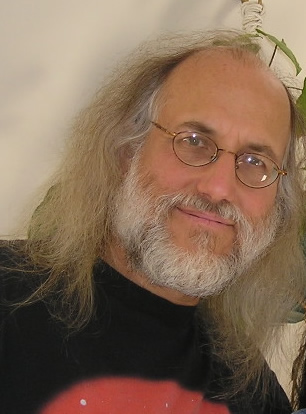
The concept of the mission was novel and bold, yet relatively easy to explain to the public. And the public was keenly interested in possibilities for discovery of exoplanets. It married the excitement of science fiction with the excitement of science! In our meetings, we learned all about essential issues – and sometimes excruciating details – and were thus better poised to produce enriching outreach products, including: classroom activities, school curricula, a planet art contest, computer simulations, table-top models (including LEGO and KNEX versions), a traveling museum exhibit, public presentations, planetarium shows, videos, StarDate radio programs, and handouts (lithographs, fact sheets, bookmarks).
The Lawrence Hall of Science at the University of California is extremely proud of its contribution of educational products and resources to the NASA Kepler Mission, which can be found on the Planetarium Activities website.
Operations Software Lead, MOC Flight Director
Home town: Boulder, Colorado
I joined the Kepler team at LASP (Laboratory for Atmospheric & Space Physics at University of Colorado, Boulder) around the mission critical design review, a couple of years before launch. My role was to help stand up the mission operations center (MOC) at LASP, specifically with respect to getting all of the software in place that we would need to conduct mission operations. This involved configuring much of our standard mission ops software to work for the Kepler spacecraft and also writing new software for Kepler's unique operational needs. Some of the new and interesting development hurdles that our team had to overcome were due to the fact that Kepler was LASP's first deep space mission. Much of our software tools and our operational processes had to be modified to work with the Deep Space Network (DSN), as well as the many quirky things that come up in operations when dealing with a significant light-time delay. The speed of light never seemed too slow to me before Kepler came along.
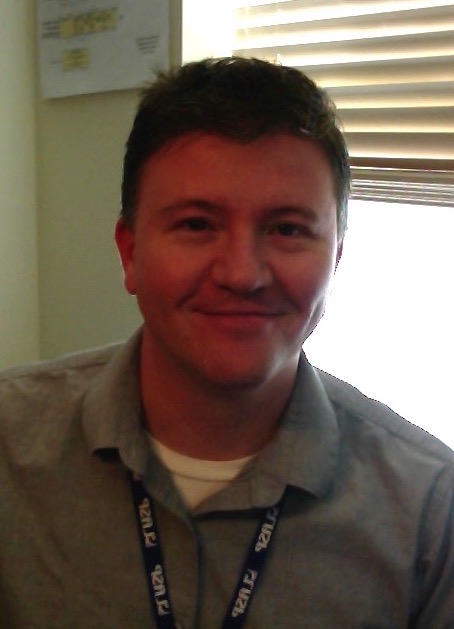
One of my most memorable software tasks was developing the software that we used to convert the raw data (as received by the DSN) into the correctly formatted data sets that the Science Operations Center (SOC) would need to be able to find planets. This was a non-trivial design that had to be constructed in a way that could perform data receipt, assembly, accounting, and delivery fast enough that we could determine any missing data and be capable of re-transmitting it if needed. It was the very first component of the science processing pipeline. I take pride in knowing that every single planet that Kepler ever found was in one of those bytes that my software was integral in processing. Working on the software taught me enough about the mission itself, that I later transitioned to working as LASP flight director, overseeing the day-to-day mission operations.
I have many fond memories of working night shifts with our student operators in the MOC, dimly illuminated by lava lamps. Working on the Kepler mission will always remain one of the brightest accomplishments of my professional career, and I will forever appreciate all the wonderful, talented people who worked on it with me.
Contracting Officer
Home town: Mountain View, California
I became involved in Kepler/K2 back in 2015, when I started administering the contract with Ball Aerospace to operate the Kepler spacecraft. My favorite memory was sitting in Charlie Sobeck’s office (project manager at the time) while he used a model of the spacecraft to explain how the NASA, Ball Aerospace, and LASP (Laboratory for Atmospheric and Space Physics) engineers and scientists figured out a way to continue using the spacecraft with only two remaining reaction wheels. Having the opportunity to work with people with that level of ingenuity, pursuing discoveries and knowledge, is what I enjoy working at NASA.
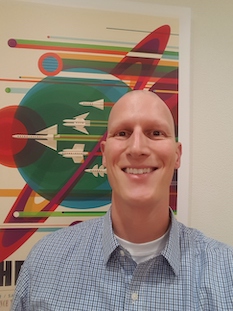
I also enjoyed all the monthly management review meetings. The project team provides updates on new Kepler/K2 scientific publications (and referenced publications) as well as the ever-increasing number of publications as people continued to make sense of the data! The mission demonstrated its power and scope, eventually including citizen scientists to go through K2 data and find new exoplanets. Kepler had tremendous impact on the world of astronomy, on future generations and on our fundamental understanding of the universe.
Flight Director, LASP
Home town: Buena Vista, Colorado
Toward the end of the mission, the light-time delay between sending a command and receiving confirmation was long enough that we had to keep reminding ourselves…
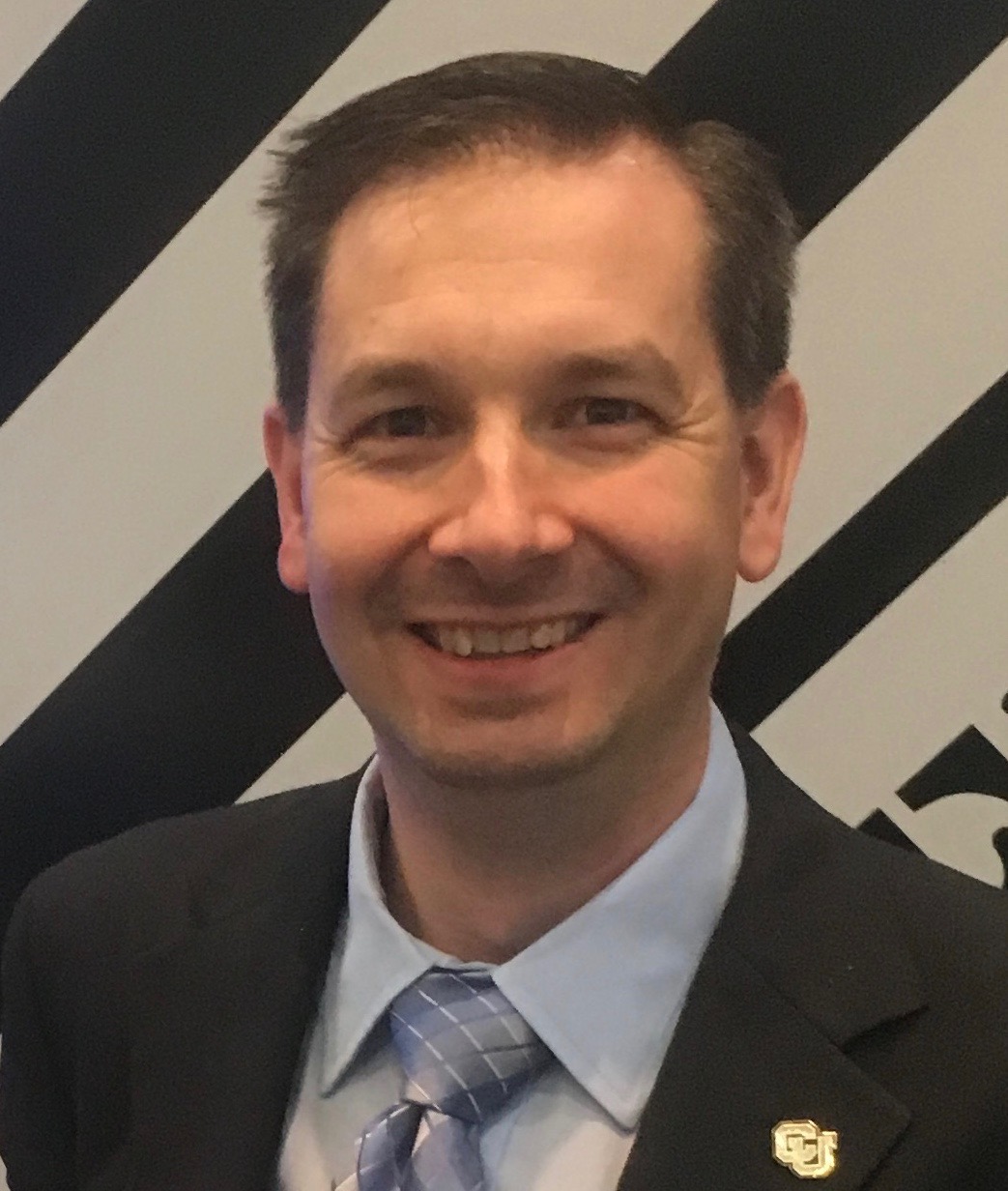
it’s Kepler, just wait.
Of course, there were times when waiting changed from being patient to instead…
I think something is wrong
. But most times it was as if Kepler just enjoyed playing. Waiting until you started to have those little moments of panic, then it would let you off the hook with good news.
One of the wonderful things about working on any spacecraft mission are the friends and acquaintances you make along the way. Kepler was no different. I will forever be grateful for the friendships Kepler created, and the opportunity to meet and work with such wonderfully smart and talented people. Being part of a mission that has literally re-written science books on the abundance of planets around stars has been a highlight of my career here at LASP (Laboratory for Atmospheric and Space Physics). When I mention my work on Kepler to the general public I’m always amazed how many people recognize and know the Kepler/K2 mission, some following the mission for a long time. Kepler was truly an inspiring mission. Viva la Kepler!
Student Operator
Home town: Boulder, Colorado
I discovered LASP (Laboratory for Atmospheric and Space Physics) at the University of Colorado, Boulder, and Kepler through an information session for undergraduates interested in working with operations. I arrived looking for free pizza and left looking for a spot on the operations team – largely thanks to the possibility of working on a mission, such as Kepler.
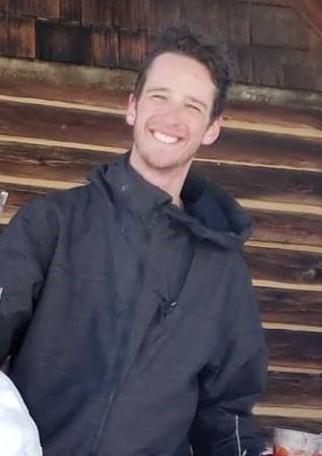
Working directly with the Kepler spacecraft was an unprecedented experience, especially for a college student. I will never forget arriving for shifts at 2 a.m. or waiting for commands and telemetry, moving at the speed of light to travel millions of miles. I will never forget the experience of being a small part of such an impactful mission. Go Kepler!
Software Engineer
Home town: Santa Clara, California
In September 2009, I accepted a software engineer position at the Kepler Science Operations Center (SOC). In my role, I analyze raw data from the Kepler spacecraft for up to 170,000 stars, with the goal of finding habitable planets. I was responsible for running tests on the software developed for Kepler that controls how the data is partitioned and distributed across the computing cluster. I run small data sets through pipeline software on a daily basis as a regression test, allowing my team to detect problems introduced by changes to the code or parameters. I also work closely with developers and scientists to troubleshoot problems, or to experiment with changes to the algorithms, prior to releasing the changes to the full clusters and Pleiades supercomputer to process multi-quarter data sets.
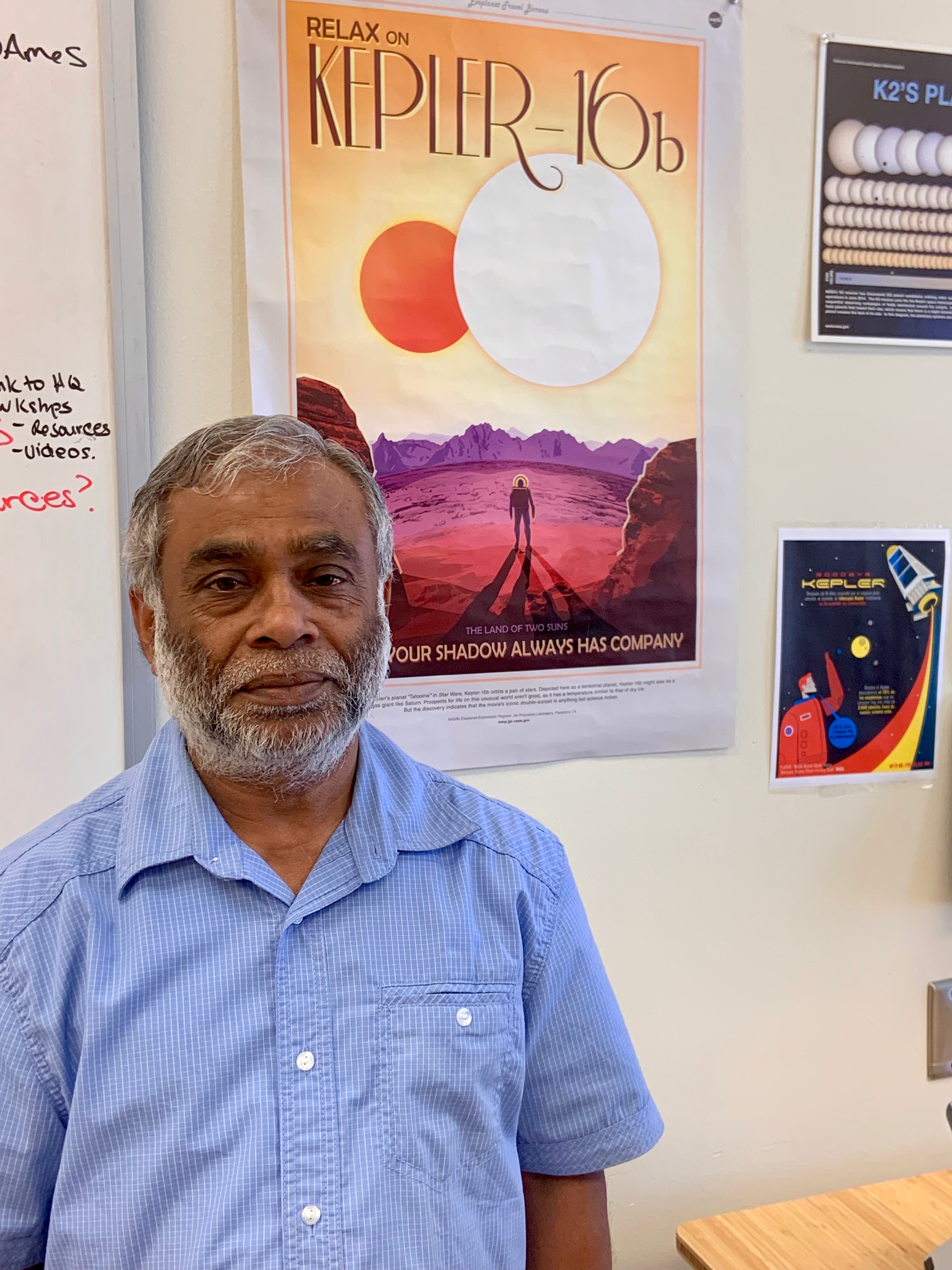
Working for Kepler has been a fascinating experience and I will always cherish my time working with NASA scientists and engineers on this humanitarian mission. I plan on bringing the same energy and enthusiasm to my next team.
Flight Controller, Lead Planner
Home town: Boulder, Colorado
The Kepler/K2 mission has been a tremendously successful mission from both science and engineering perspectives. I am proud to have worked with all the great minds involved on the project. I started off my professional career with the launch of Kepler and am thrilled to have been a part of decommissioning, acting as the on-console flight controller for both major events. During this time, I participated as a flight controller supporting real-time flight operations and also acted as the lead planner in the final years of K2. We supported many late nights and long contacts amongst great colleagues making for an exceptional experience. My participation in this mission was both exciting and rewarding in many ways. Kepler has been a highlight in my career!
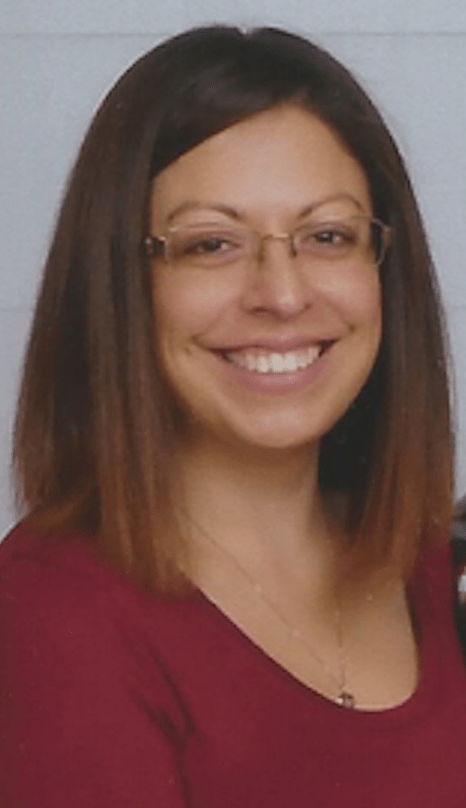
Student
Home town: Winthrop, Washington
The Kepler mission was my introduction to astronomy research. I was an undergraduate when I started my first project with K2 data, which focused on removing systematic noise introduced by the motion of the spacecraft. As I worked closely with other young astronomers in the community, I was amazed by how significant the impact of our research felt despite our early career stage. We were part of a large community of scientists excited by the wealth of data from the mission, and we were driven to extract the highest possible volume of science from these observations and build on the work of our colleagues. Our research was encouraged and supported by the Kepler team and other astronomers. I love the collaborative environment that evolved around Kepler/K2 and the open science it has encouraged, and I am grateful to be involved.

Contracting Officer
Home town: Mountain View, California
In 2007 I joined the team to manage the Kepler contracts and naturally began playing on the Kepler-based “Space Cadets” softball team. Besides softball there were many notable Kepler memories including unique contract negotiations, observing the spacecraft build progress in the clean room, launch, “first light,” on-orbit operations, and thousands of planet discoveries – many of which could eventually become habitable! One of my favorite highlights was watching Kepler launch on the Delta II rocket from Cape Canaveral with the team and my family! I will always remember the excitement standing next to Bill Borucki, Kepler’s pioneer and principal investigator, as his brainchild successfully lifted off and made its way into orbit. The pride among the team was palpable! In 2018, I transitioned to deputy director of the NASA Ames Multi-Mission Operations Center (MMOC) and worked with the Kepler team through decommissioning of science operations.
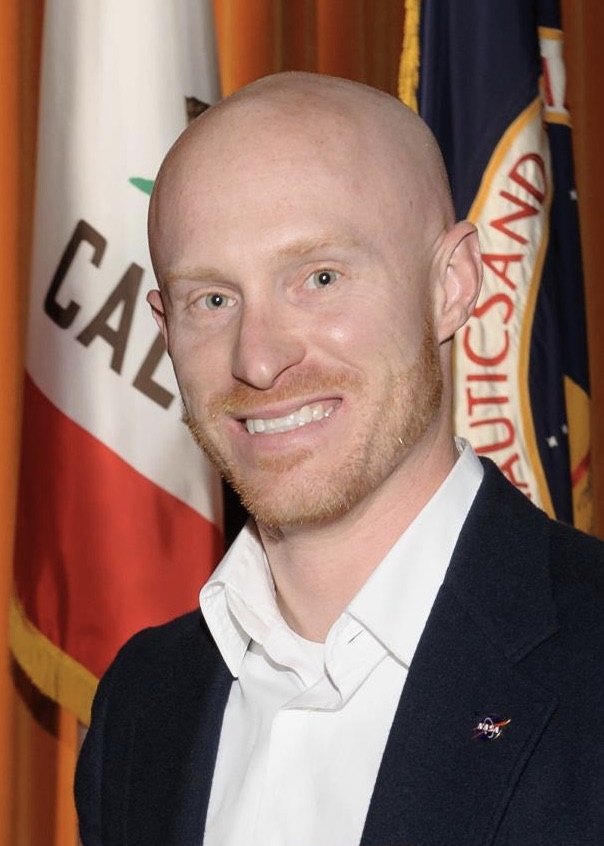
Astronomer
Home town: Clarks Summit, Pennsylvania
I joined the Center for Astrophysics/Harvard & Smithsonian (CfA) in 2008. Beforehand, I conducted observational work with Kuiper Belt objects. When I started at the CfA, it was an exciting time for exoplanets with the launch of Kepler on the horizon. I was interested in getting involved and worked with Dave Latham’s group. I am primarily interested in the confirmation and classification of exoplanets. I owe my start in exoplanet research to the Kepler mission and worked on Kepler/K2, multiple ground-based surveys, and more recently TESS. Thanks Kepler!
